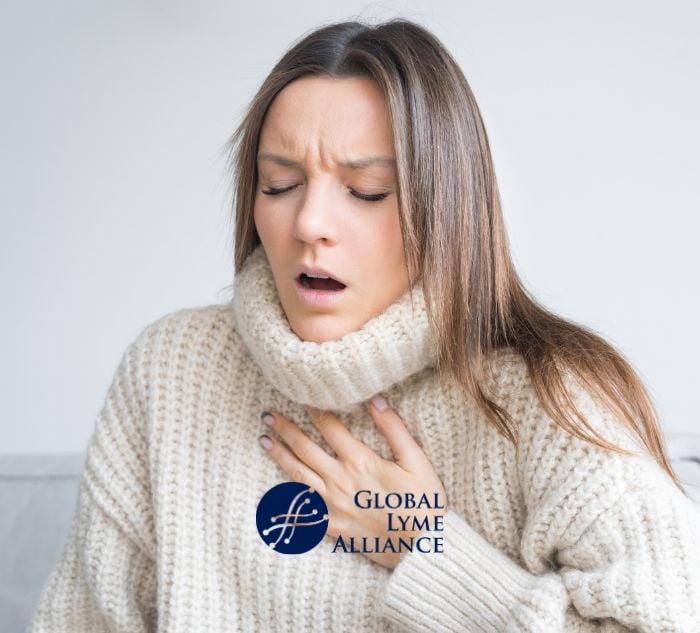
Explore the differences between Babesiosis and Bartonellosis, uncovering the complexities of vector-borne diseases and the challenges of diagnosis and treatment.
Before I was diagnosed with tick-borne disease in 2005, I didn’t realize that black-legged ticks, commonly referred to as deer ticks, can transmit more than just Borrelia burgdorferi, the bacteria that causes Lyme disease. My vague understanding of Lyme was that it’s an infection you can get from ticks in the woods, and it causes a bullseye rash. Little did I know that cases of Lyme have been reported in every U.S. state; that ticks live in many different moist, shady areas; that not everyone gets an erythema migrans rash, or that said rash actually comes in many forms. As I became more Lyme-literate because of my own case, more and more myths about Lyme were dispelled.
I also learned about co-infections, which are bacterial, viral, or parasitic infections that can be transmitted in addition to—or instead of—Lyme disease. That’s right—you can get a tick bite and not get Lyme, but still get Babesiosis, or Ehrlichiosis, or Powassan virus. Fleas and lice can also carry a bacteria called Bartonella. Some co-infections can be quite serious if not deadly, and many require different treatment than Lyme. If you are being treated for Lyme disease but haven’t been evaluated for other tick-borne infections, you may only be fighting half the battle.
Luckily, I was diagnosed by a Lyme Literate Medical Doctor (LLMD) with Lyme disease, Babesiosis, Ehrlichiosis, and possible Bartonellosis. Some of my treatments overlapped, but some did not (for example, Babesiosis required anti-malarial medication). Similarly, some of my symptoms overlapped, but some did not.
These days, vector-borne disease and literacy about them are both on the rise, so more people are getting diagnosed with multiple vector-borne infections. Often, people have Babesiosis and Bartonellosis together. Over the years, it’s been helpful for me to understand the similarities and differences between the two, so that when symptoms flare, my doctor and I can determine which infection to treat.
Are Babesiosis and Bartonellosis the Same Type of Infection?
No. Babesiosis is a malaria-like infection of red blood cells caused by the parasite Babesia. Bartonellosis is a bacterial infection caused by Bartonella. It is sometimes referred to as cat-scratch disease, though you don’t need to have been scratched by a cat to have Bartonella. There are different species of both.
Babesia can be transmitted by ticks and also through blood transfusions. Although transmission of the Bartonella species of bacteria by ticks is still questioned by some, increasing evidence points to it being an important player in zoonotic infections (those transmitted from animals to people), and a potentially significant cause of human illness. There is indirect clinical evidence but ongoing research continues to seek the smoking gun indicating tick transmission.
Illness from Bartonella is most often associated with being transmitted by an infected cat scratch or bite but it can also be from an infected dog or other animal. It can also be transmitted by multiple other carriers including fleas, sandflies, body lice, needlesticks, ants, mosquitos, chiggers, biting flies, scabies, mites, and louse-eating spiders. There is some evidence indicating that it may also be transferred through a transfusion with contaminated blood. In addition, in the medical literature there is some support for possible maternal-fetal transmission. Clearly stated, there are multiple ways to get this infection. Personally, I have known that many people with Borrelia burgdorferi that have also tested positive for Babesia and Bartonella. I tested CDC-positive for Lyme, Ehrlichiosis, and Babesiosis, and my doctor had clinical suspicion that I also had Bartonellosis.
What Symptoms Overlap?
Though Babesiosis and Bartonellosis are different types of infections, they both can make you very sick, and both can exacerbate Lyme symptoms. Like Babesia, Bartonella can get into red blood cells. Both illnesses can be relapsing. Both can cause fever, fatigue, headache, malaise, and loss of appetite. Since Lyme disease can cause all of these symptoms, too, it can be hard to tell which illness is causing which symptom.
What Symptoms are Distinct?
There are some symptoms that clearly distinguish Babesiosis and Bartonellosis from each other. Specific Babesiosis symptoms include:
- Sweats (particularly night sweats)
- High fever
- Nausea
- Hemolytic anemia that can cause tiredness and dizziness and ultimately spleen or liver problems
- Air hunger
- Lightheadedness
- Hypoglycemia
Babesiosis can be fatal for immunocompromised individuals.
Specific Bartonellosis symptoms include:
- Starting with a red mark that can become swollen or discolored
- Striae (deep red or purple marks that look like stretch marks)
- Heel pain or other body pain
- Swollen lymph nodes (especially under ears) often with conjunctivitis
- Heart or spleen problems
- Bone lesions
- Hepatitis
- Eye problems
- Encephalitis (causing seizures and coma)
- Sore throat
- Bladder problems
What Does it Feel Like to Have Babesiosis and Bartonellosis?
I wish there was a simple answer to this question, but like all vector-borne diseases, no two cases of Babesiosis and/or Bartonellosis are alike. People have different symptoms for different periods of time. Some cases are relatively mild, while other people are chronically debilitated by one or both of these diseases.
I can only speak from my own personal experience, which is that both diseases exacerbated my Lyme symptoms and made treatment for all of them (in addition to chronic active Epstein Barr virus) slow and complicated. My protocol changed often and I suffered a complete relapse before achieving steady remission.
For me, the symptoms that made my LLMD suspect bartonellosis in the first place were heel pain and striae. (To learn more, see my blog post “Could You Be Co-infected With Bartonella?”)
Babesiosis has caused more serious symptoms for me and has been harder to fight. Early on, it caused frequent bouts of hypoglycemia, weakness, and dizziness. I often felt like I was going to pass out. It also caused pretty severe air hunger that would give me the feeling that marathon runners describe of “hitting a wall” after riding 30 seconds—yes, seconds not minutes—on a stationary bike.
I would say that my Bartonellosis is completely cleared up; I haven’t experienced symptoms of it in many years. My babesiosis still flares from time to time, though it used to flare regularly every six months and would require an intense round of anti-malarial treatment, and now it is managed with only periodic minor flares. (To read more, see my blog post “Have You Heard of the Tick-Borne Disease Babesiosis?”)
There is Hope
If you have Lyme disease or other tick-borne disease like Babesiosis or vector-borne disease like Bartonellosis, life may seem grim right now, but with the right treatment, you can get better. We also can be heartened by GLA-funded research such as The Bartonella Discovery Project, which is working towards finding better treatment options for Bartonellosis.
Sources:
https://www.globallymealliance.org/about-lyme/prevention/other-tick-borne-diseases/
https://www.lymedisease.org/lyme-basics/co-infections/bartonella/
https://lyme.health.harvard.edu/other-tick-borne-diseases/
***
The above material is provided for information purposes only. The material (a) is not nor should be considered, or used as a substitute for, medical advice, diagnosis, or treatment, nor (b) does it necessarily represent endorsement by or an official position of Global Lyme Alliance, Inc. or any of its directors, officers, advisors or volunteers. Advice on the testing, treatment or care of an individual patient should be obtained through consultation with a physician who has examined that patient or is familiar with that patient’s medical history.

Jennifer Crystal
Writer
Opinions expressed by contributors are their own. Jennifer Crystal is a writer and educator in Boston. Her work has appeared in local and national publications including Harvard Health Publishing and The Boston Globe. As a GLA columnist for over six years, her work on GLA.org has received mention in publications such as The New Yorker, weatherchannel.com, CQ Researcher, and ProHealth.com. Jennifer is a patient advocate who has dealt with chronic illness, including Lyme and other tick-borne infections. Her memoir, One Tick Stopped the Clock, was published by Legacy Book Press in 2024. Ten percent of proceeds from the book will go to Global Lyme Alliance. Contact her via email below.
